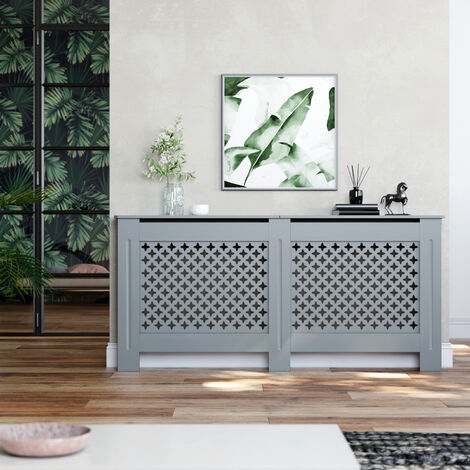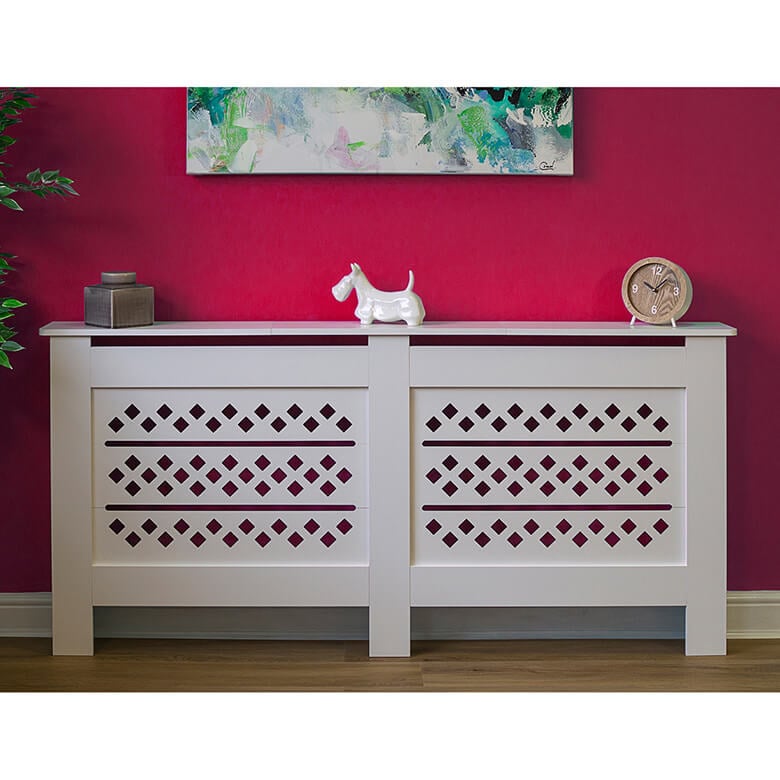Radiator Cover Solutions for Small and Large Areas
Radiator Cover Solutions for Small and Large Areas
Blog Article
Radiator Covers: Recognizing Materials, Designs, and Advantages
Radiator covers serve both aesthetic and functional purposes within a home, providing a variety of products such as metal, hardwood, and mdf to fit different style choices. As styles evolveâEUR" from standard to contemporaryâEUR" these covers not only enhance the aesthetic allure of an area yet also contribute to security and energy performance. Picking the best radiator cover includes understanding the nuances of materials, layouts, and their connected benefits. This expedition elevates vital questions about exactly how these components incorporate right into your living environment and what considerations need to guide your choice procedure.
Kinds Of Products


Wood covers, often crafted from hardwoods such as oak or maple, give a timeless, cozy appearance that enhances traditional interiors. Their resilience and ability to be stained or painted contribute to their convenience. Steel covers, typically made from steel or aluminum, are favored for their robustness and modern-day look, commonly including smooth lines that improve contemporary areas.
MDF, a manufactured wood item, is preferred for its cost-effectiveness and ease of modification. It can be painted or finished to match existing design while using a smooth surface area. Plastic covers, while less typical, are immune and light-weight to moisture, making them suitable for moist atmospheres.
Ultimately, the option of product for a radiator cover ought to line up with the property owner's style preferences, useful demands, and the certain environment where the cover will certainly be mounted. Each material offers a distinctive personality, ensuring that there is a choice to match every preference and setting.
Popular Design Styles
Emphasizing aesthetic allure, popular style styles for radiator covers reflect a variety of preferences and interior decoration fads. Standard designs often feature complex woodwork and luxuriant detailing, making them appropriate for traditional or vintage-inspired interiors. These covers generally include sculpted components, offering a cozy and inviting feel to any type of room.
In contrast, contemporary styles concentrate on minimal appearances, identified by tidy lines and understated style. Materials such as metal or sleek wood with a smooth surface are frequently utilized, permitting these covers to blend seamlessly right into contemporary rooms. Industrial styles, on the other hand, embrace basic materials like revealed steel and concrete, adding a strong declaration to loft space or city settings.
For those looking for a distinct touch, bespoke layouts use modification alternatives that provide to specific choices, allowing homeowners to pick shades, patterns, and materials that enhance their style. In addition, farmhouse-style covers integrate rustic elements, including troubled timber and straightforward kinds that evoke a relaxing, nation charm.
Advantages of Radiator Covers
Radiator covers not only boost the aesthetic allure of a space yet likewise use numerous functional advantages that pop over here make them a worthwhile addition to any kind of home. One of the primary benefits is safety and security, particularly in homes with kids or pets. Covers reduce the danger of burns from warm radiator surface areas, making sure a more secure environment.
Additionally, radiator covers can improve power effectiveness. By directing warmth right into the area instead of allowing it to escape, they aid keep a constant temperature level, minimizing home heating costs with time. This is especially advantageous in older homes where radiator systems may be less reliable.
One more remarkable advantage is noise reduction. Radiators can in some cases produce undesirable audios during procedure, and covers can help stifle these noises, adding to a more relaxed space. In addition, radiator covers can be functional, offering extra storage space or display screen room, consequently taking full advantage of the energy of often-overlooked locations.
Lastly, they can safeguard radiators from dust and debris, which can prevent efficiency and increase upkeep needs. With these combined advantages, radiator covers arise as a functional option for boosting both the capability and design of any home environment.
Installation Considerations
Setting up radiator covers needs cautious consideration to make sure both functionality and safety and security (Radiator cover). First, assess the measurements of your radiator and the surrounding room to ensure an appropriate fit. Accurate measurements are essential; an uncomfortable cover can block warmth circulation or create safety and my link security risks
Next, examine the product of the cover. While wood uses visual appeal, metal choices might give much better durability and heat resistance. Consider the weight of the cover as well; heavier covers might need added assistance or supports to prevent sagging or damages gradually.
Ventilation is one more vital facet. Covers should include appropriate airflow to avoid getting too hot and keep efficient heating. Seek designs with slats or openings that permit warmth to circulate without obstruction.
Additionally, make certain that the cover is safely placed to stop crashes, particularly in homes with children or animals. Radiator cover. It's advisable to follow the manufacturer's setup standards very closely and, if required, speak with a specialist for intricate installments
Upkeep and Care Tips
Appropriate upkeep of radiator covers is important for ensuring their durability and optimal efficiency. For repainted or wood covers, take into consideration a suitable polish or protective finish to maintain their look.
Inspect the covers occasionally for signs of wear or damage, such as fractures or peeling paint. Addressing these concerns without delay can stop further degeneration. Make certain that the covers are securely fastened and look for any type of loosened screws or fittings, as resonances from the radiator can loosen them with time.
In cooler months, avoid putting heavy items or attractive things in addition to the radiator covers, as this can hamper warm circulation and create unnecessary tension to the framework. Think about seasonal upkeep by removing the covers for complete cleaning and examination throughout warmer months when the home heating system is inactive. Taking on these basic care tips will certainly enhance the performance and aesthetic charm of your radiator covers, ensuring they offer their purpose efficiently for many years ahead.

Verdict
In summary, radiator covers offer as visual and functional enhancements to domestic More Bonuses rooms. Cautious factor to consider of installment and upkeep further guarantees the durability and effectiveness of radiator covers in any kind of home atmosphere.
Radiator covers serve both visual and practical functions within a home, supplying a range of products such as mdf, hardwood, and metal to fit various design preferences. Selecting the appropriate radiator cover entails comprehending the nuances of products, layouts, and their associated benefits.Stressing aesthetic appeal, preferred design styles for radiator covers reflect a range of preferences and indoor layout patterns.Radiator covers not only boost the visual allure of a room but additionally use a number of sensible advantages that make them a worthwhile enhancement to any type of home. Take into consideration the weight of the cover as well; heavier covers might need added assistance or reinforcements to stay clear of drooping or damages over time.
Report this page